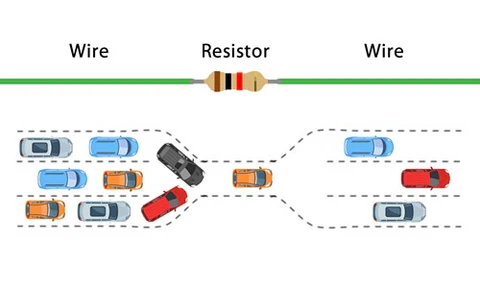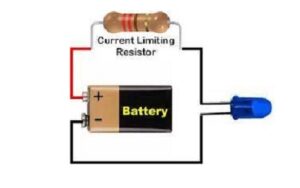Understanding Resistors: The Unsung Heroes of Electronics

Resistors are among the most fundamental components in electronics, quietly performing their duties in countless devices we use every day. But what exactly is a resistor, and why is it so crucial? Let’s dive into the world of resistors and uncover their secrets!
What is a Resistor?
A resistor is an electrical component that resists the flow of electric current, hence the name “resistor.” It’s designed to limit or regulate the amount of current that passes through an electrical circuit. By doing so, resistors help protect sensitive components from damage due to excessive current and control the behavior of the circuit.

How Does a Resistor Work?
The basic principle of a resistor is simple: it resists the flow of electrons. When an electric current passes through a resistor, it encounters resistance, which converts some of the electrical energy into heat. The amount of resistance is measured in ohms (Ω), named after Georg Simon Ohm, a German physicist who discovered the relationship between voltage, current, and resistance.

Why Are Resistors Important?
Resistors play several vital roles in electronic circuits:
Current Limiting: By providing resistance, they prevent too much current from flowing into sensitive components like LEDs, microcontrollers, or sensors, which could otherwise be damaged.
Voltage Division: In a circuit with multiple resistors, they can divide voltage levels. This technique is crucial for creating reference voltages or for interfacing components that operate at different voltage levels.
Signal Conditioning: Resistors are often used in combination with other components like capacitors to filter, shape, or condition signals in analog circuits, such as audio equipment.
Heat Dissipation: Resistors dissipate electrical energy as heat, which can be useful for applications like heating elements.
Types of Resistors
Resistors come in various types, each suited for different applications:
Fixed Resistors: These have a specific resistance value that does not change. They are the most common type and come in various forms, including carbon film, metal film, and wire-wound resistors.
Variable Resistors (Potentiometers): These resistors can be adjusted to different resistance values. They’re used in applications like volume control in audio equipment or dimmer switches for lights.
Thermistors: These are temperature-sensitive resistors. Their resistance changes with temperature, making them useful in temperature sensing and control applications.
Photoresistors: Also known as light-dependent resistors (LDRs), these change resistance based on the amount of light they receive. They’re commonly used in light-detecting circuits, like automatic streetlights.
How to Read a Resistor’s Value
Resistors often use color-coded bands to indicate their resistance values. These color codes represent numbers and multipliers, which together give you the resistance in ohms. Understanding the color code chart is a handy skill for anyone working with electronics.

Practical Example: Using Resistors in a Circuit
Let’s consider a simple example: lighting an LED. LEDs require a specific amount of current to operate correctly. Too much current can burn them out, while too little will make them dim. A resistor in series with the LED ensures that the current flowing through the LED remains within safe limits. This makes the resistor an essential part of even the most basic electronic projects.
Stay tuned for daily updates and dive deep into the world of Robotics with us!

